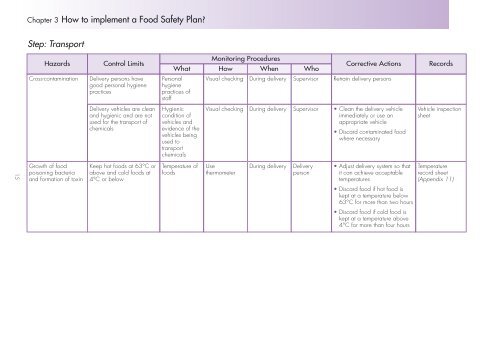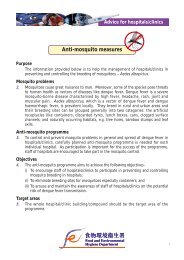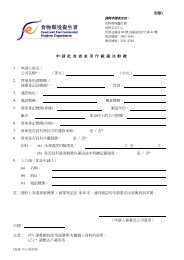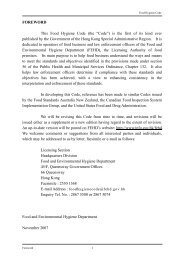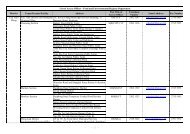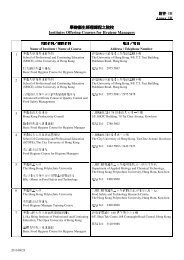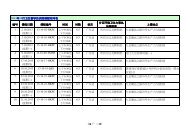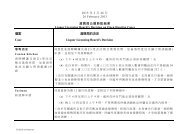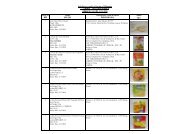Download the whole document (PDF file, 1311 KB)
Download the whole document (PDF file, 1311 KB)
Download the whole document (PDF file, 1311 KB)
Create successful ePaper yourself
Turn your PDF publications into a flip-book with our unique Google optimized e-Paper software.
15<br />
Chapter 3 How to implement a Food Safety Plan?<br />
Step: Transport<br />
Hazards Control Limits<br />
What<br />
Monitoring Procedures<br />
How When Who<br />
Corrective Actions Records<br />
Cross-contamination Delivery persons have Personal Visual checking During delivery Supervisor Retrain delivery persons<br />
good personal hygiene hygiene<br />
practices<br />
practices of<br />
staff<br />
Growth of food<br />
poisoning bacteria<br />
and formation of toxin<br />
Delivery vehicles are clean<br />
and hygienic and are not<br />
used for <strong>the</strong> transport of<br />
chemicals<br />
Keep hot foods at 63°C or<br />
above and cold foods at<br />
4°C or below<br />
Hygienic<br />
condition of<br />
vehicles and<br />
evidence of <strong>the</strong><br />
vehicles being<br />
used to<br />
transport<br />
chemicals<br />
Temperature of<br />
foods<br />
Visual checking During delivery Supervisor • Clean <strong>the</strong> delivery vehicle<br />
immediately or use an<br />
appropriate vehicle<br />
• Discard contaminated food<br />
where necessary<br />
Use<br />
<strong>the</strong>rmometer<br />
During delivery Delivery • Adjust delivery system so that<br />
person it can achieve acceptable<br />
temperatures<br />
• Discard food if hot food is<br />
kept at a temperature below<br />
63°C for more than two hours<br />
• Discard food if cold food is<br />
kept at a temperature above<br />
4°C for more than four hours<br />
Vehicle inspection<br />
sheet<br />
Temperature<br />
record sheet<br />
(Appendix 11)


